During frosty winter months, many birds migrate south to warmer climes. Some head off in small flocks, while others form large formations of thousands or even millions of birds. These travelers often cover hundreds, if not thousands of miles on their journey, and some species may cross entire continents! However, not all birds migrate. Some stay in one place year-round, while others move only a short distance. Keep reading to discover some of the most common migratory birds, followed by five species that stick around for the winter.
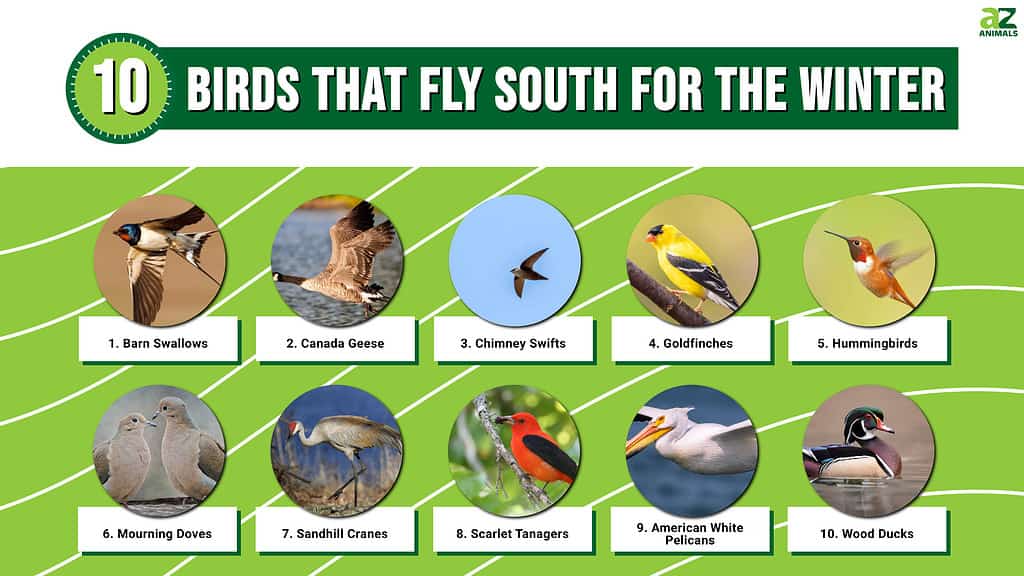
Birds That Fly South for the Winter
Migratory birds travel for many reasons, including to find food, seek out a more temperate climate, or simply to breed. Let’s learn about some of the most common winter migrants!
1. Barn Swallows
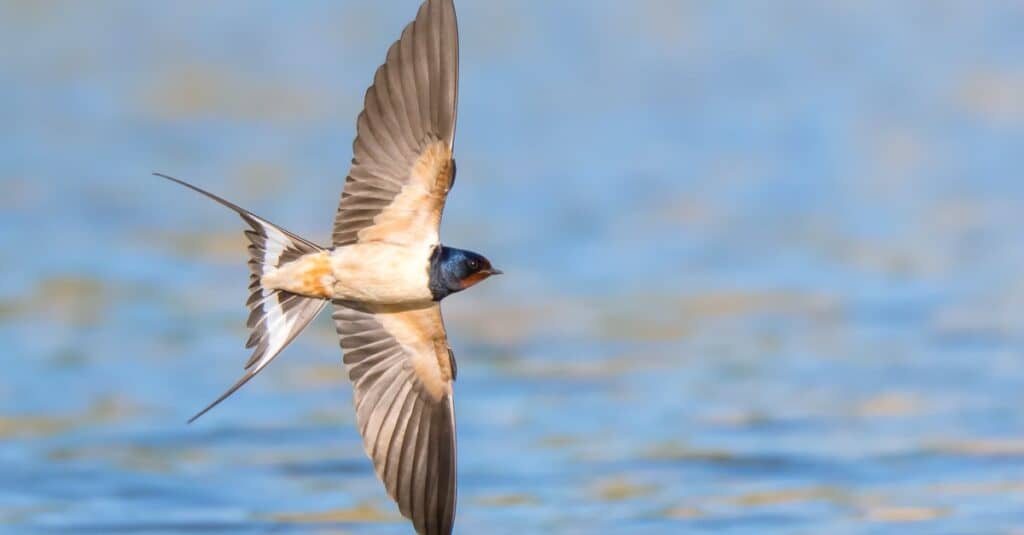
Barn swallows fly quite low, often just skimming the treetops.
©Mirko Graul/Shutterstock.com
Barn swallows (Hirundo rustica) are neotropical migrants that fly twice each year. This means you will find barn swallows in different regions at different times over a year. In early spring, they will fly to breed and nest in North America, often arriving in April or May.
Then, towards the end of fall or as soon as temperatures drop, they migrate from their North American breeding grounds back to the south to spend the winter in Central and South America. These long-distance migrants return to the United States and Canada when the weather improves.
Barn swallows fly quite low, often just skimming the treetops. This makes them particularly vulnerable to predators and bad weather, so they travel in large flocks of hundreds or thousands. They fly at a speed of up to 44 mph and can cover up to 200 miles in a single day.
2. Canada Geese

Canada geese learn their migration routes from their parents and often use the same nesting sites yearly.
©iStock.com/Wayne Marinovich
The usual nesting sites for Canada geese (Branta canadensis) are in Canada and the northern US. But most travel farther south to the United States or northeastern Mexico. However, some overwinter in southern Canada as long as they can find food and open water.
Canada geese prepare for their journey in midsummer while they are still nesting. They fly in large iconic V-formations and can cover 1,000 miles daily if favorable weather is favorable.
Canada geese learn their migration routes from their parents and often use the same nesting sites yearly. They may also explore new routes if weather conditions or food availability become unfavorable. Despite being a waterfowl species, Canadian geese eat leaves, berries, stems, roots, oats, soybeans, seeds, and other crops.
3. Chimney Swifts

Chimney swifts are long-distance migrants with their original breeding sites in the eastern parts of the United States and southeastern Canada.
©iStock.com/Matthew Jolley
Chimney swifts, or Chaetura pelagica, are long-distance migrants with their original breeding sites in the eastern parts of the United States and southeastern Canada. During winter, they migrate to South America to escape the low temperatures and the lack of food sources.
Chimney swifts usually start migrating in August through October and return in April when winter is over. They fly across the Gulf of Mexico or skirt along the Texas coast. However, many chimney swifts use the Atlantic coast, the east side of the Appalachians, and the Mississippi River flyways. These small birds usually migrate in loose flocks of 6-20. On rare occasions, they fly to the western United States in summer.
4. Goldfinches
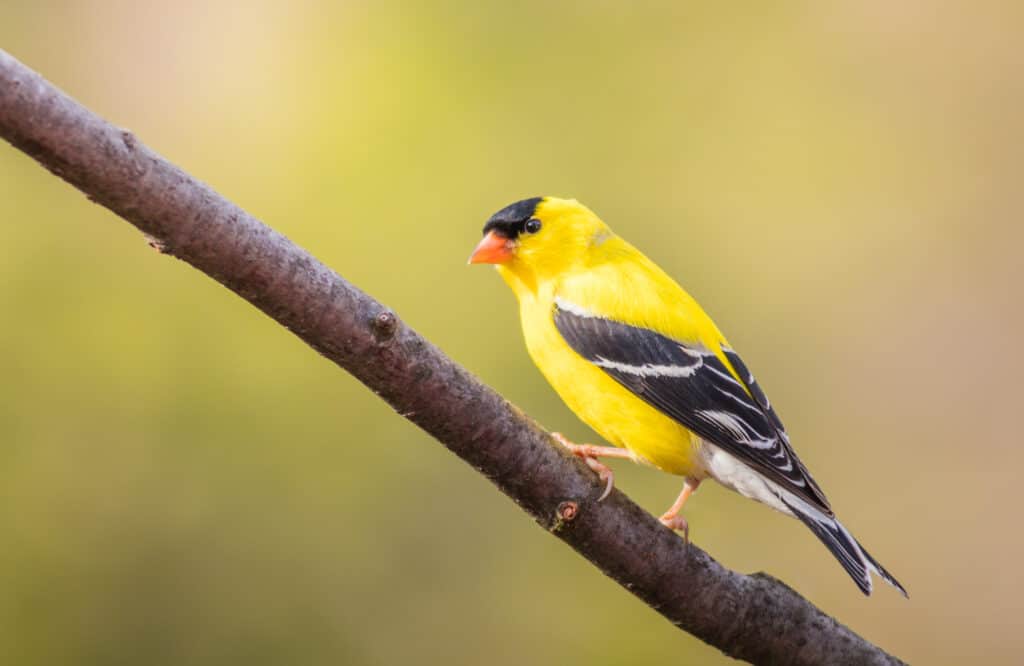
The Goldfinch is one of the most beloved birds in North America.
©Rabbitti/Shutterstock.com
Goldfinches are among the most beloved birds in North America. These small, vibrant songbirds are a common sight for backyard bird feeders throughout the year. But come wintertime, many of these beautiful birds migrate southward to warmer climates, searching for food and shelter, reaching the Southern United States and eastern Mexico. They prefer eating seeds from plants like thistle, which are not as plentiful during the colder months.
5. Hummingbirds
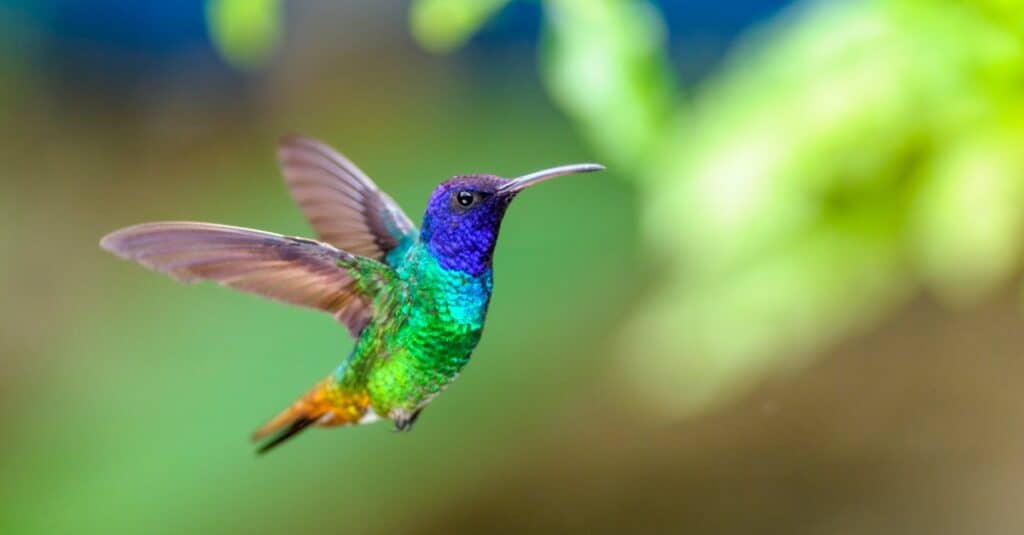
Hummingbirds are migratory birds that move away from cold temperatures to find food sources.
©iStock.com/photofxs68
Hummingbirds are migratory birds that move away from cold temperatures to find food sources. To support their migration, they go through a process called “fattening up.” This is a method through which they store fat that will sustain their flights south. Hummingbirds fly south to Mexico and Central America to escape cold winter temperatures that can make it difficult to find food or build nests. Their main food sources are insects, larvae, spiders, mosquitos, insect eggs, and nectar which are hard to find in winter.
6. Mourning Doves

Mourning doves usually migrate south from September to early November to find food sources such as grains, seeds, and fruits.
©Phoo Chan/Shutterstock.com
Mourning doves usually migrate south from September to early November to find food sources such as grains, seeds, and fruits. These partial immigrants head to the southern parts of the USA and Mexico. They fly low in flocks for thousands of miles to their new temporary home before they migrate back to their breeding grounds.
7. Sandhill Cranes
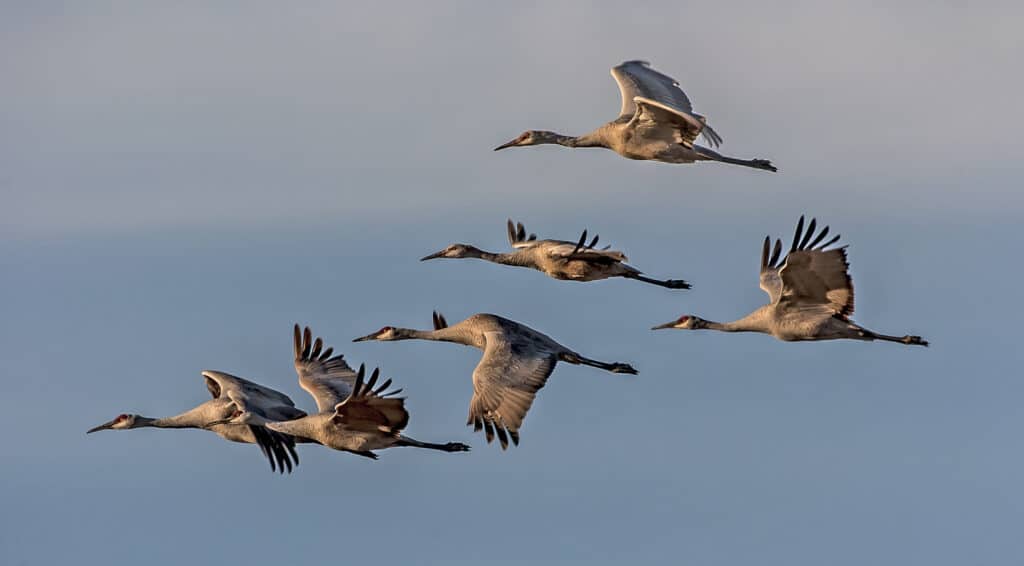
Sandhill cranes are known for their distinctive long-necked appearance, reddish foreheads, gray body feathers, and white wings with black tips.
©Tom Zeman/Shutterstock.com
Sandhill cranes are large birds found throughout North America and parts of Alaska, Canada, and Siberia. These birds are known for their distinctive long-necked appearance, reddish foreheads, gray body feathers, and white wings with black tips.
Sandhill cranes migrate twice a year: once in the fall before winter sets in and again in the spring when temperatures rise. They typically spend the winter months feeding on grains, seeds, and insects before heading north when temperatures rise again in the spring.
8. Scarlet Tanagers
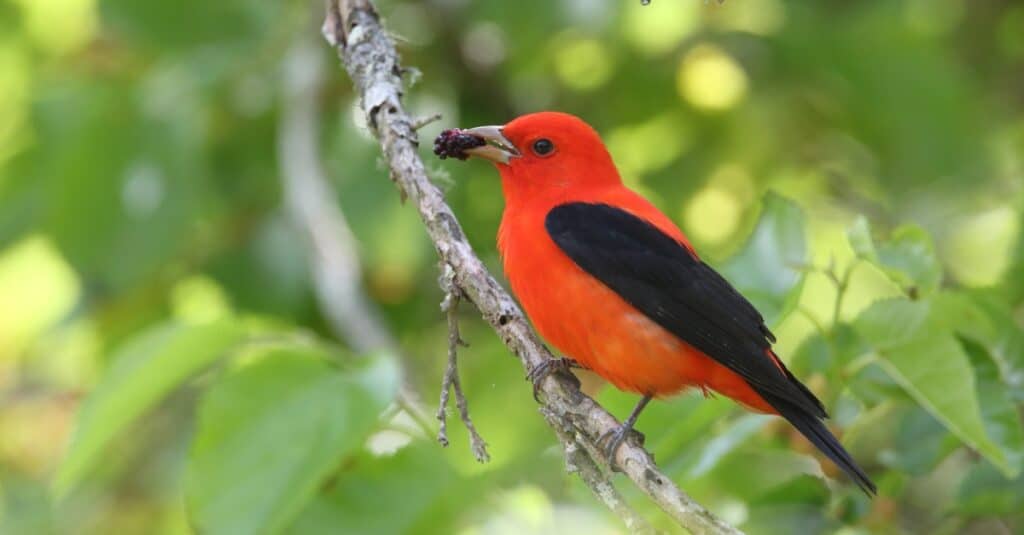
Scarlet tanagers feed mainly on large-bodied insects, such as grasshoppers, beetles, and caterpillars.
©iStock.com/BrianLasenby
Scarlet tanagers (Piranga olivacea) are medium-sized North American songbirds easily recognizable by their bright red feathers and black wings. They are most commonly found in deciduous and mixed forests of eastern North America. Scarlet tanagers feed mainly on large-bodied insects, such as grasshoppers, beetles, and caterpillars. During summer, these birds can be seen foraging high in the trees or flying from tree to tree, searching for fruits. Scarlet tanagers migrate south for food.
9. American White Pelicans
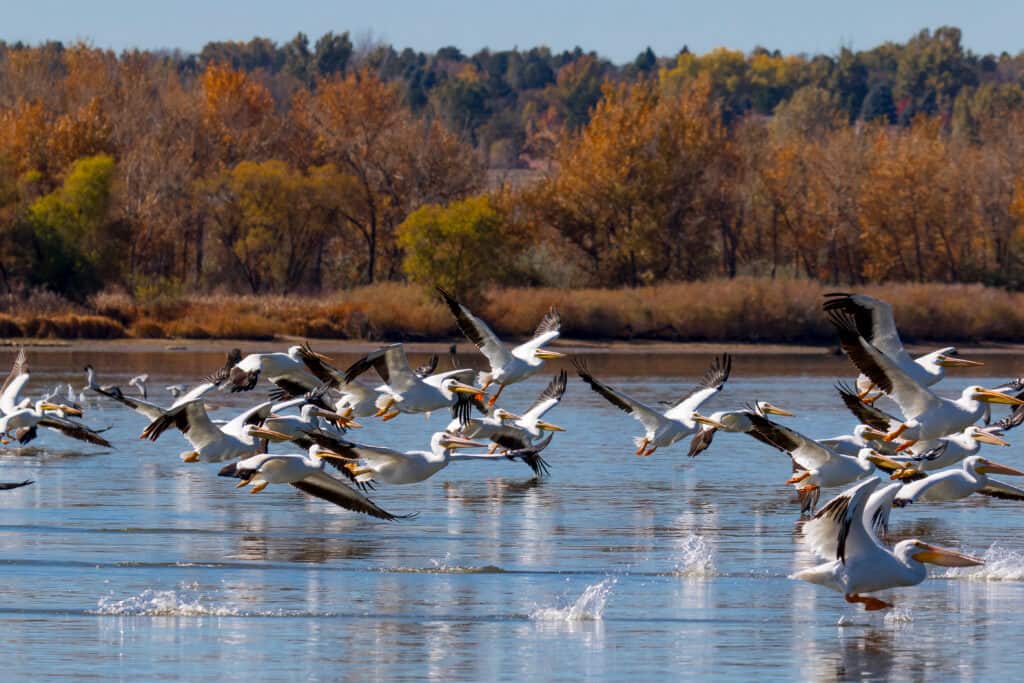
American white pelicans can be found in temperate, boreal, subtropical, and tropical wetlands.
©Images by Dr. Alan Lipkin/Shutterstock.com
American white pelicans are a species of large water birds native to North America and can be found in islands in remote brackish and freshwater lakes. They are migratory birds, meaning they fly south for winter to warmer climates as the days get shorter and temperatures drop. American white pelicans fly south from October to November to winter on the Gulf Coast, California, and Mexico. They mainly stay near coastal waters, bays, and estuaries.
10. Wood Ducks
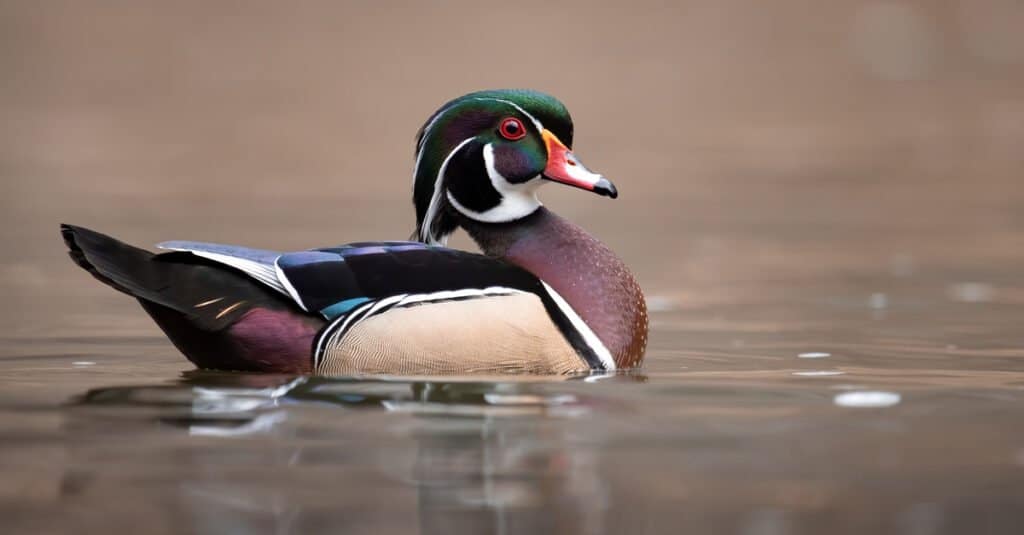
Wood ducks migrate south in the fall and can be spotted on the Atlantic coast.
©Harry Collins Photography/Shutterstock.com
Wood ducks (Aix sponsa) are a species of waterfowl that breed and live in North America. They inhabit wooded swamps, shallow lakes, marshes, ponds, and rivers with dense vegetation, making them ideal for roosting and nesting. Wood ducks migrate south in the fall and can be spotted on the Atlantic coast. To escape the harsh winter season, they fly south to the West Indies and eastern Texas for wintering.
Birds That Don’t Migrate for the Winter
While many birds migrate south for the winter, some stay put. Let’s look at some species that choose to remain in the same location year-round and why they choose to do so.
1. Chukar Partridges

Chukar partridges prefer high elevations ranging between 6,000 and 10,000 feet.
©Martin Pelanek/Shutterstock.com
Found in the high deserts of western North America, chukar partridges, or simply chukars, are non-migratory game birds. They prefer high elevations ranging between 6,000 and 10,000 feet. Instead of going south during winter, chukars practice altitudinal migration by flying to or below the snowline. This means their migration depends on which altitudes are experiencing the most favorable temperatures for survival.
2. Northern Cardinals

Northern cardinals have extra feather layers for warmth and can adjust their body temperature by fluffing their feathers.
©iStock.com/Lynnae_Lowe
Northern cardinals, also known as redbirds, are some of the most recognizable birds in North America, thanks to their bright red, orange, or blue feathers and distinct calls. Unlike other cardinal species, Northern cardinals don’t fly south for the winter. They can forage for food sources year-round, such as seeds, nuts, fruits, and insects, contributing to their ability to survive harsh winters.
Northern cardinals have extra feather layers for warmth and can adjust their body temperature by fluffing their feathers. These birds resort to techniques such as shivering or dropping their temperature in extremely low temperatures to conserve energy.
3. Verdins
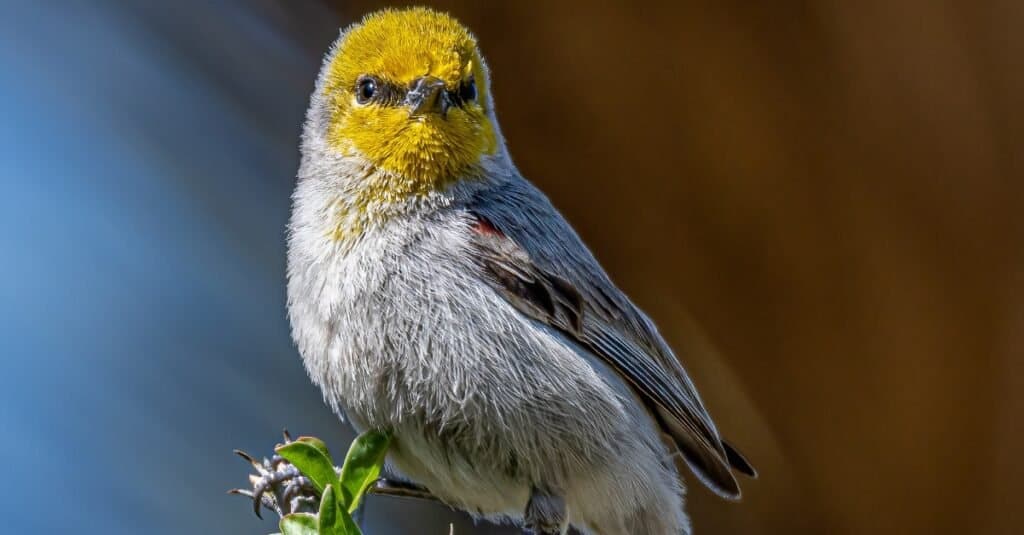
The verdin is a small non-migratory songbird native to North America.
©iStock.com/Rodrigo Izquierdo
Verdins are small non-migratory songbirds native to North America. These birds are found throughout central North America and are known to inhabit places where their needs are best met, even when temperatures drop. These year-round residents build roosting and breeding nests, in which they take shelter during winter.
4. Black-Capped Chickadees
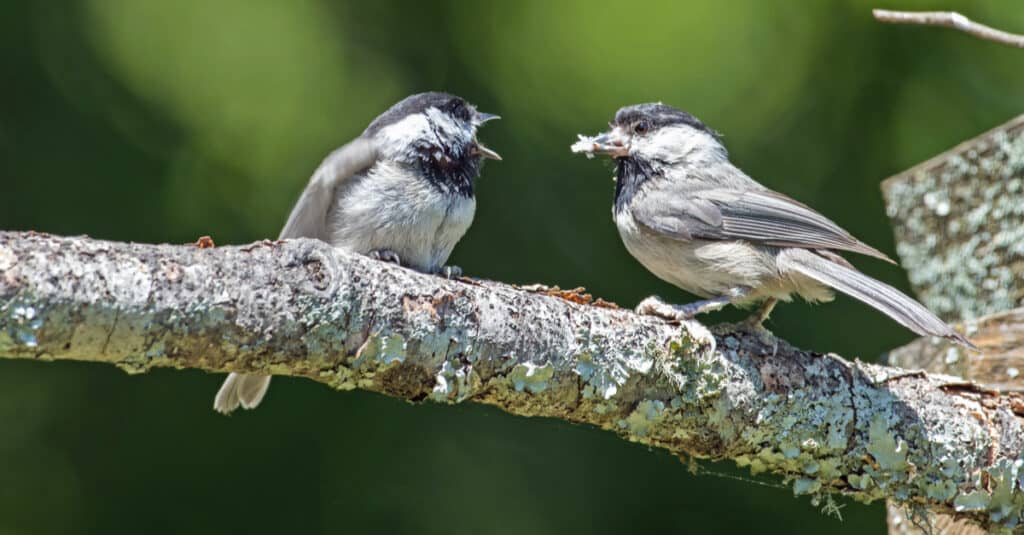
Black-capped chickadees’ diet consists of insects such as caterpillars and flies during summer and sunflower seeds and berries during winter.
©Tom Franks/Shutterstock.com
Black-capped chickadees don’t fly south in winter to escape the harsh weather as most birds do. Their diet consists of insects such as caterpillars and flies during summer and sunflower seeds and berries during winter. To survive harsh winters, they shelter themselves in cavities found in trees. In addition, they eat foods high in fats that help them gain weight each day and undergo regulated hypothermia to preserve energy.
5. Wild Turkeys

During severe storms, wild turkeys shelter themselves in tree cavities.
©iStock.com/Robert Winkler
Wild turkeys have adapted to survive in various weather conditions. They don’t migrate because they can survive on nuts, acorns, hazelnuts, greens, and berries in winter. Wild turkeys also spend time building their fat supply by eating fruits, nuts, and plants before winter kicks in. During severe storms, these birds shelter themselves in tree cavities.
Summary of 10 Birds That Fly South For The Winter (And 5 That Don’t)
| # | Migrating Bird | Non-Migrating Bird |
|---|---|---|
| 1 | Barn Swallows | Chukar Partridges |
| 2 | Canada Geese | Northern Cardinals |
| 3 | Chimney Swifts | Verdins |
| 4 | Goldfinches | Black-Capped Chickadees |
| 5 | Hummingbirds | Wild Turkeys |
| 6 | Mourning Doves | |
| 7 | Sandhill Cranes | |
| 8 | Scarlet Tanagers | |
| 9 | American White Pelicans | |
| 10 | Wood Ducks |
The photo featured at the top of this post is © Brian Lasenby/Shutterstock.com
Sources
Thank you for reading! Have some feedback for us? Contact the AZ Animals editorial team.







